What Is Shield?
Shield is the mortar between the brickwork of your service oriented architecture, the glue that fits services smoothly together. It gathers multiple services into a single domain and adds a production ready varnish on top in the form of HTTP middleware.
Shield is ostensibly another implementation of the API Gateway pattern, but provides a unique combination of configurable middleware, upstream service aggregation, and intelligent request routing.
For those unfamiliar with the API Gateway pattern, the gateway acts as the primary entrypoint into a microservice ecosystem. Depending on how it’s configured, both internal and external clients may send requests to the gateway for delivery to the appropriate upstream service.
Shield: Service Discovery
Automated tools make life much simpler for the infrastructure engineer. Shield integrates with existing service discovery mechanisms to detect new deployments and scaling events in order to automatically start sending traffic to them.
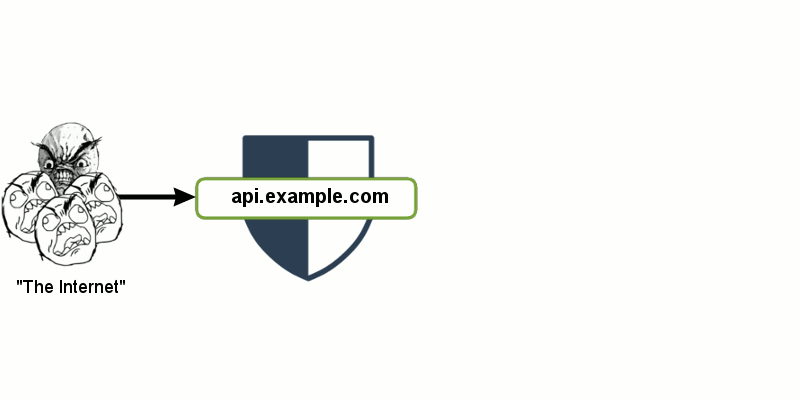
As these new hosts come online, Shield will retrieve their Swagger Documentation that describes what endpoints they are capable of serving. Shield will intelligently route traffic to that host if it’s actually capable of handling the request.
Shield: The Router
When Shield is in front of multiple unique services, it needs to know where to forward the request on to. To solve this routing problem, Shield builds a routing table for all the upstream endpoints that were discovered during the Service Discovery phase. The routing table then maps a request to a service by looking at the HTTP method, path, and content type of the request and desired response.
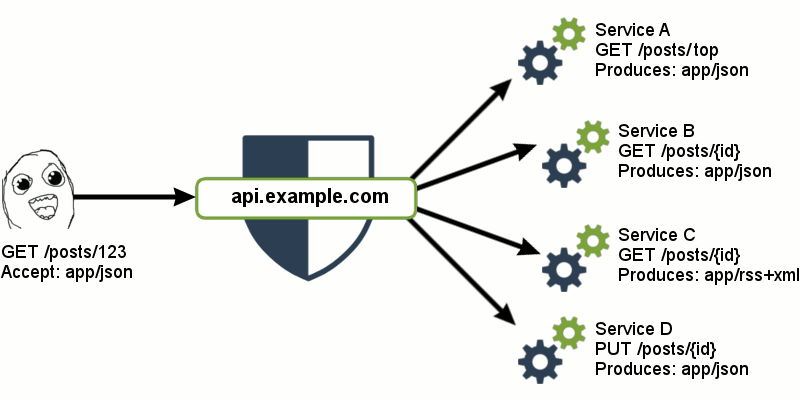
This routing is fast, on the order of 0.01ms, even when choosing among hundreds of endpoints exposed by the upstream services.
Shield is smart when multiple upstream endpoints could be used to satisfy the request, and uses the most specific endpoint possible when deciding which upstream to proxy to.
Shield: The Load Balancer
Shield will load balance requests on a per endpoint basis. This means a request will be balanced across multiple instances of the same service and across different services that advertise the same endpoint.
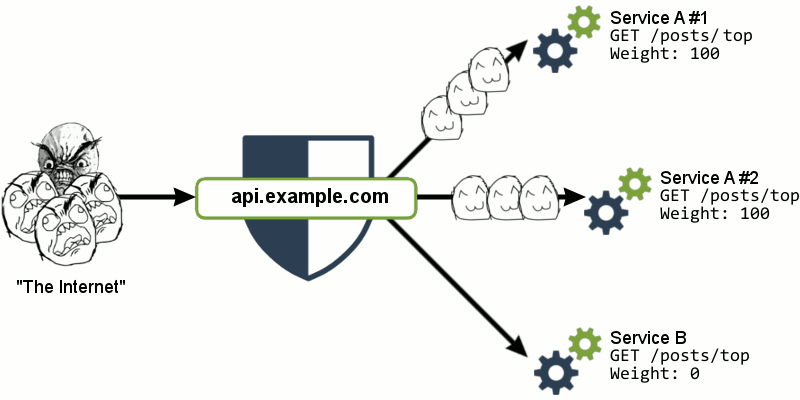
Shield has weighted load balancing logic, and will smoothly transition between weight values. In the example above, “Service B” could be the next version of “Service A”. Updating the weight on Service B would smoothly transition the load to the new deploy, giving it ample time to scale up if needed. This is ideal for graceful blue/green deployments.
Shield: The Proxy
Shield takes advantage of its position as a proxy to help guard the upstream services during times of trouble. Each
upstream service is guarded by a Circuit Breaker so that
Shield will automatically re-route or shed traffic if the upstream service is experiencing consistent failures or slowdowns.
Additionally, each endpoint on the upstream service has its own dedicated Circuit Breaker so one endpoint that
relies on a flaky resource does not bring down the whole service.
In the example below, Service B has experienced a failure and its circuit breaker has opened, resulting in Shield immediately returning a failure response.
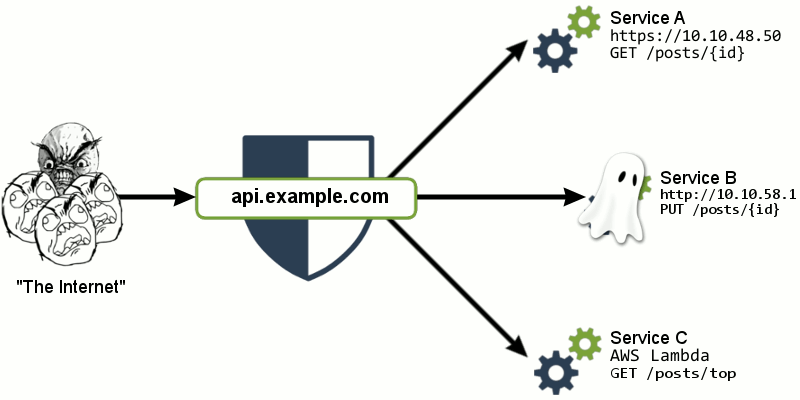
While the lingua franca of the web is HTTP, it’s very common to use a different method for communicating between the services in your architecture. Shield supports each upstream service having a different transport mechanism. The incoming request will be translated and sent across the wire in the dialect that the service supports. Shield currently handles HTTP, HTTPS, and AWS Lambda, with more to come in the near future.
Shield will also handle the compression of the requests and responses, inflating or deflating them based on the preferences of the clients and the services.
Shield: The Middleware Engine
Under the hood, Shield uses Akka’s Actor model to power request and response middleware. These middleware can perform common operations like caching, rate limiting, and authentication. These middleware are all driven by Shield configuration, including the ability to set timeouts before which the middleware must respond. If the middleware actors does not respond in time, the request processor will auto advance to the next middleware.
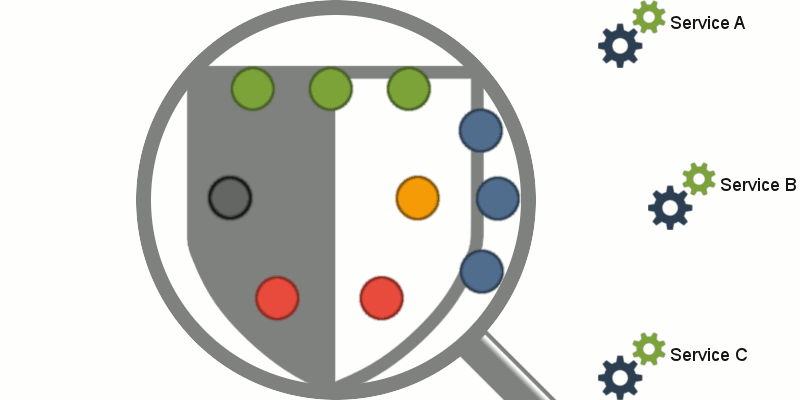

Listeners are similar to middleware, but they receive the request and response pair after the response has already been sent to the client. This allows listeners to asynchronously do their processing without impacting the client experience. Common use cases here include logging and analytics. Like their middleware brethren, listeners are controlled via configuration.
Shield: Production Ready
Shield has been powering RetailMeNot’s API since early 2016 and has proven to be stable and fast across billions of requests.
From observation of production deployments and load testing, Shield performance traits are quite impressive:
- Fast (~5ms overhead)
- Scalable (1 host: 20,000 req/s)
- Reliable (Akka’s “Let It Crash” mentality)